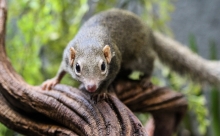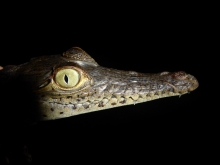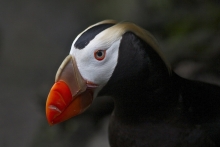What drives crocodile evolution? Is climate a major factor or changes in sea levels? Determined to find answers to these questions, researchers from McGill University discovered that while changing temperatures and rainfall had little impact on the crocodiles’ gene flow over the past three million years, changes to sea levels during the Ice Age had a different effect.


To better understand the evolution of flowers, researchers from Montreal are harnessing photogrammetry – a technique commonly used by geographers to reconstruct landscape topography. This is the first time scientists have used the technique to study flowers.
The team, including researchers from McGill University, Université de Montréal, and the Montreal Botanical Garden, published the results of their work in the journal New Phytologist.

Does evolution follow certain rules? Can these rules be predicted? Southeast Asia’s tree shrews break multiple rules when it comes to body size variation – with an unexpected twist – according to researchers from McGill University, University of Cambridge, and Yale University. The findings shed new light on the effects of climate change on the evolution of body size in animals.

Many mammal species living in cold climates tend to have large bodies and short limbs to reduce heat loss – a general pattern known as Bergmann’s rule. However, bats are the exception to the rule, displaying small body sizes in both hot and cold regions. A McGill-led team of researchers is shedding light on this long-standing debate over bats’ body sizes and focus on why bats are seemingly non-conforming to ecogeographical patterns found in other mammals. Their findings offer a new method for investigating complex macroecology across bat species.

When did the Earth reach oxygen levels sufficient to support animal life? Researchers from McGill University have discovered that a rise in oxygen levels occurred in step with the evolution and expansion of complex, eukaryotic ecosystems. Their findings represent the strongest evidence to date that extremely low oxygen levels exerted an important limitation on evolution for billions of years.

Wild populations must continuously adapt to environmental changes or risk extinction. For more than fifty years, scientists have described instances of “rapid evolution” in specific populations as their traits (phenotypes) change in response to varying stressors. For example, Spanish clover has developed a tolerance for copper from the mine tailings in which it grows, and the horn size of Alberta bighorn sheep has decreased due to trophy hunting.

Crocodiles are resilient animals from a lineage that has survived for over 200 million years. Skilled swimmers, crocodiles can travel long distances and live in freshwater or marine environments. But they can’t roam far on land. American crocodiles (Crocodylus acutus) are found in the Caribbean and Pacific coasts of the Neotropics but they arrived in the Pacific before Panama existed, according to researchers from McGill University.

Despite having bat-like wings, two small dinosaurs, Yi and Ambopteryx, struggled to fly, only managing to glide clumsily between the trees where they lived, according to a new study led by an international team of researchers, including McGill University Professor Hans Larsson. Unable to compete with other tree-dwelling dinosaurs and early birds, they went extinct after just a few million years.

Researchers from McGill University have revealed the steps by which two very distinct organisms – bacteria and carpenter ants – have come to depend on one another for survival to become a single complex life form. The study, published today in Nature, shows that the two species have collaborated to radically alter the development of the ant embryo to allow this integration to happen. Understanding how such grand unifications originate and evolve is a major puzzle for biologists.
Biologists now have a better idea of the origin of birds and the evolution of flight, two iconic events in the history of life on earth, thanks to work by a group of international scientists including a McGill professor. In updating the evolutionary tree, the team’s findings show some dinosaurs could fly before they evolved into birds, and many others were experimenting with powered flight.

Bird species that have the capacity to express novel foraging behaviors are less vulnerable to extinction than species that do not, according to a collaborative study involving McGill University and CREAF Barcelona and published today in Nature Ecology & Evolution.

Species adapt to their local climates, but how often they adapt to their local communities remains a mystery. To find answers, researchers at McGill University and the University of British Columbia examined over 125 studies testing local adaptation in over 100 species of plants and animals in an article published in The American Naturalist.

How can predators coexist with their prey over long periods without the predators completely depleting the resource that keeps them alive? Experiments performed over a period of 10 years by researchers from McGill University and the Universities of Oldenburg and Potsdam have now confirmed that regular oscillations in predator-prey populations can persist over very long periods

Tufted puffins regulate their body temperature thanks to their large bills, an evolutionary trait that might explain their capacity to fly for long periods in search for food.
In a new study published in the Journal of Experimental Biology, researchers from McGill University and the University of California, Davis, used thermal imaging cameras to measure heat dissipation off the bodies and beaks of wild tufted puffins in the minutes after flying.

Some diseases which are fatal in one species can cause only mild discomfort in another—but it’s hard for scientists to predict how lethal a disease will be if it leaps across species.
However, a new paper published this week in PNAS indicates that the evolutionary relationship between infected hosts can predict the impact of diseases.
